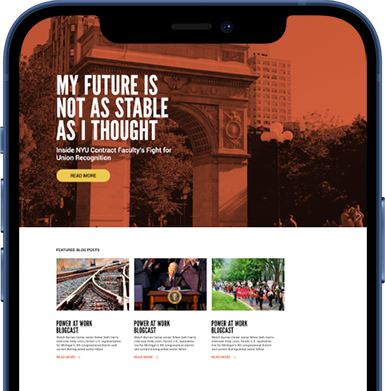The largest U.S. healthcare worker strike in recent history, involving 75,000 workers uniting against Kaiser Permanente under the banner of the Coalition of Kaiser Permanente Unions, resulted in the Oakland-based healthcare company agreeing to a contract in November to set higher hourly minimum wages and promising its workers a 21% wage increase over the next four years.
The last time workers reached an agreement with Kaiser was in 2018, before the onset of the COVID-19 pandemic, when conditions for healthcare workers deteriorated as efforts to treat those affected by the illness reached extreme levels of urgency. The effects on health care workers also were extreme.
According to an American Hospital Association study, 93% of healthcare workers reported experiencing stress and 86% reported experiencing anxiety while treating COVID-19 patients, but only 13% of those front-line workers said they received behavioral health services.
Common grievances that healthcare workers, particularly nurses, have expressed include severe problems with understaffing, long hours with minimal breaks, and an inadequate supply of personal protective equipment, or PPE. During the pandemic, nurses were asked to reuse masks up to 20 times, according to nurses at Albany Medical Center in New York. The issues health care workers have long faced were exacerbated by the COVID-19 outbreak, contributing to the recent increase in strikes.
The national nursing shortage experienced in the middle of the pandemic is discussed in the following video by The New York Times. Nurses’ grievances in the video include the demands patients bark at nurses and the grave danger of being exposed to COVID-19. Nurses say they are done working for hospitals that don’t give them adequate working conditions. The video suggests there have never been more licensed nurses, but hospitals are purposely understaffing to maximize profit.
“There’s not a shortage of nurses, there’s just a shortage of nurses willing to work under those conditions,” Marlena Pellegrino, a nurse of 35 years said in the video.
Concerns about understaffing remain a top issue for healthcare workers today. The recent Kaiser strike was sparked, in part, by these concerns, as Christian Siguenza, a laboratory assistant at Kaiser Permanente in Southern California, explained in an interview published on the Power At Work blog.
Historically, the most effective way for workers to obtain better wages and working conditions has been through organizing and collective bargaining.
The National Labor Relations Board (NLRB) protects workers by ensuring employees have the right to organize to demand better wages, working conditions, and treatment through collective action. However, organizing efforts by health care workers have not always been protected by federal private-sector labor law. The health care industry was excluded prior to 1974.
In 1973, Washington became the first state to recognize a nurse as an “independent provider,” thereby granting nurses the authority to provide health care services without the direct supervision of other professionals. In 1974, provisions added to the National Labor Relations Act gave nurses and other healthcare workers the right to organize and bargain collectively just like other workers.
It did not take long for health care workers to put these newly created legal protections to the test. The inaugural Washington State Nurses Association strike of 1976 involved 15 of 18 Seattle-area hospitals. More than 1,500 nurses joined in a monumental effort to advocate for national certification programs and professional treatment.
That strike, fueled by the emerging feminist movement at the time, lasted for 68 days until a contract offer by the Seattle Area Hospital Council was proposed. The offer included an eight to twelve percent wage increase and more pay per month when working double shifts. Additionally, the first nurse in Washington state was granted certification in geriatric nursing practice, another promise of the reached agreement.
1976 strike (Photo from Washington State Nurses Association)
1976 was just the beginning of nurses exercising their right to strike. In 2000, Nyack Hospital nurses in New York launched a 162-day strike to protest the grueling 16-hour back-to-back shifts they were working amid a staffing crisis and a lack of sick days. The battle with management over pay increases and sufficient consideration of their needs lasted until they came to an agreement that management would consult the union about staffing levels.
In 2012, 4,500 nurses from 10 Northern California hospitals walked off their jobs due to a contract dispute with the hospital chain. In 2014, 18,000 Kaiser Permanente nurses in Northern California went on a two-day strike during the Ebola outbreak to demand better staffing to support their work during the crisis.
2014 Kaiser strike (Photo from National Nurses United)
To some, the recent Kaiser Permanente strike may seem like a new phenomenon. But history shows that health care workers have always sought to have more say in their work lives. As health care workers tirelessly devote themselves to ensuring better health for the American public, they expect to be treated with the same dignity they give their patients — and they are not afraid to keep fighting when necessary.

